
views
- On your turn, roll 6 dice. Check for single 1s, single 5s, three or more-of-a-kinds, or straights that earn points.
- Set aside any scoring dice you want to save. Reroll the remaining dice to try and score more points during the round.
- End your turn when you choose to stop and add the points to your total. If none of your dice can score on a roll, your turn ends and you score 0 for the round.
- Win the game if you’re the first player to get 10,000 or more points.
Gameplay & Scoring
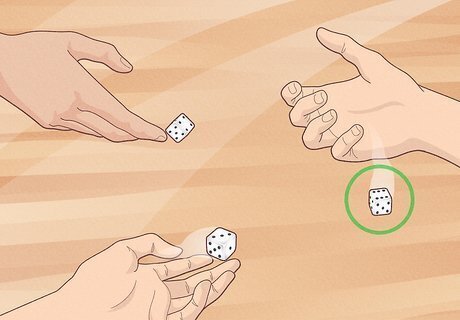
Pick the player who rolls the highest number on a die to go first. You’ll need 6 dice and at least 2 players, but you can add as many more people to the game as you want. Give each person 1 six-sided die and have everyone roll. Whoever rolls the highest number goes first, and then the other players take turns going clockwise around the table.Note: If more than 6 people are playing, choose someone randomly to go first. If multiple people are tied for the highest number, have them roll again until someone gets a higher number.
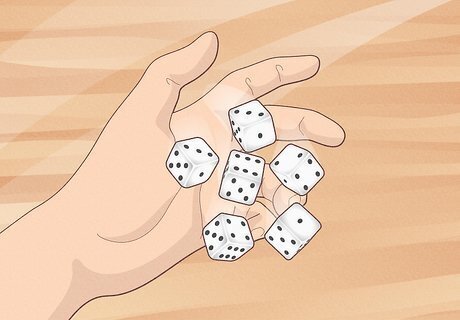
Roll all 6 dice on your turn. When it’s your turn, take all 6 dice and shake them in your hand gently before rolling them. Keep the dice on a flat, even surface so they don’t roll onto the floor. Alternatively, toss all the dice into a dice cup. Shake the cup and then flip it over quickly onto the table to roll the dice.

Check the dice for any 1s, 5s, and sets of the same dice. Look at the dice you just rolled to find the ones that score points. Dice showing a 1 or 5 score by themselves, but all other values score points if you roll a set of 3 or more. The point values of each scoring dice are: Single 5: 50 points Single 1: 100 points Three 2s: 200 points Three 3s: 300 points Three 4s: 400 points Three 5s: 500 points Three 6s: 600 points Three 1s: 1,000 points For each extra die with the same value as a 3-of-a-kind, you earn double the amount of points. So, if you roll three 2s, you gain 200 points. If you roll four 2s in the same roll, the points double to 400. After that, five 2s are worth 800 points and six 2s are worth 1,600 points.
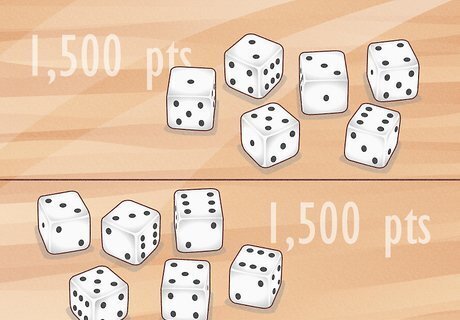
Score 1,500 points by earning a straight or 3 pairs. If you rolled a 1, 2, 3, 4, 5, and 6 at the same time, you’ve earned a straight worth 1,500 points. Additionally, if you get 3 separate pairs during the same roll, you also earn 1,500 points. Example: If you rolled two 3s, two 5s, and two 6s, you would get 1,500 points. Variation: Some people may play with house rules where a low straight (1, 2, 3, 4, 5) is worth 1,250 points, and a high straight (2, 3, 4, 5, 6) earns 50 points. If you roll 4-of-a-kind and a pair in one roll, you also earn 1,500 points.
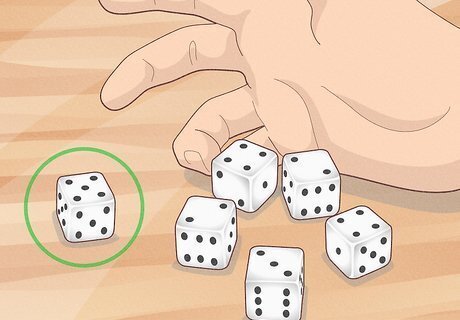
Set aside at least 1 die that scores to continue your turn. Scoring dice are any singles, like 1s and 5s, or sets, like a three-of-a-kind and a straight. If you rolled one or multiple dice that earned you points, choose at least 1 of them to set aside to bank the points that you’ve earned. If you want to continue your turn, put at least 1 scoring die aside. You won’t roll any dice you set aside again for the rest of your turn. Even if you have multiple dice that score, you only need to set 1 of them aside. That way, you have more dice to reroll and have a better chance at earning more points.
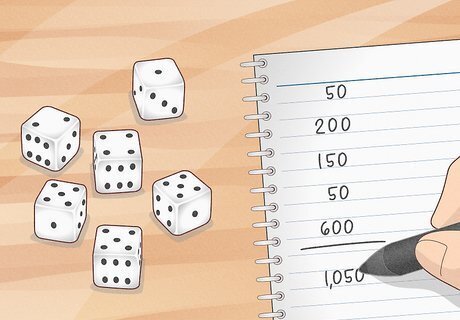
Earn at least 1,000 points on your first turn to get “on the board.” If you’ve earned less than 1,000 points from your roll, you must keep rerolling the dice to bank up more points. Roll as many times as you need to until you earn enough points to get on the board. Variation: For an easier game, earn at least 500 or 750 points on your first turn to get on the board instead. If that’s still too difficult, you don’t need to play with this rule. Each person needs to earn 1,000 points when it’s their turn to begin officially scoring. After your first turn, you can earn as few or as many points as you’d like.
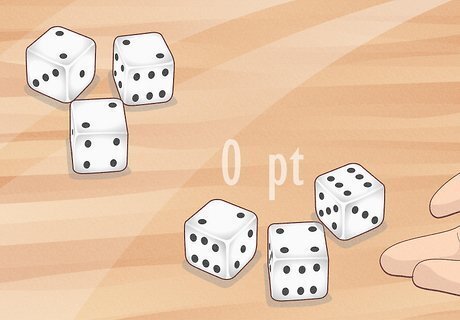
End your turn and lose points you earned if you don’t have any scoring dice. If you roll singles or doubles of 2s, 3s, 4s, or 6s, you haven’t earned any points for the roll and your turn ends. Even if you’ve put scoring dice aside earlier, you lose any points that you banked up and pass the dice to the next player. Example: If you set aside 3 twos on your first roll, and then rolled a 2, 4, and 6, your most recent roll is worth zero points, so the points you earned on your first roll no longer count.

Stop rolling when you're satisfied with your score for the round. After each time you set aside scoring dice, choose if you want to continue rolling the remaining dice to bank more points, or call it quits for your turn to add the points to your score. Once you decide to stop, your turn is over and the next player takes theirs. Example: If you first rolled three 6s, set aside the 6s to bank 600 points. If you then rolled the remaining 3 dice and got 1, 5, and 4, you can set aside the 1 and 5 to bank another 150 points for a total of 750. If you’re happy with that score for the round, announce it’s the end of your turn. Remember that if none of the dice you roll can score, you lose all the points you banked on your turn. If you’re able to set aside all 6 dice when you’re scoring, you have the choice to stop or reroll all 6 to keep adding to your score. Only the dice from your most current roll count towards scoring points. If you already set dice aside to score them, you cannot use them to create a new three-of-a-kind.
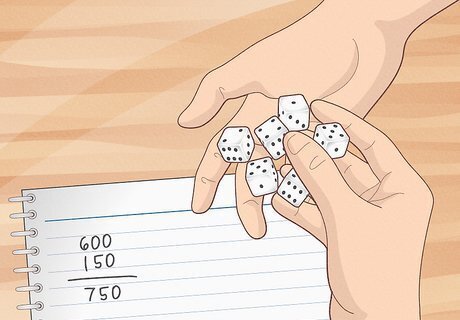
Calculate your score for your turn and pass the dice to the next player. Write down how many points you earned on your turn. If it’s later in the game and you already have points from a previous round, add the points you just earned to your total. Once you've calculated your score for that round, pass the dice to the player to your left so they can take a turn.
Strategizing to Win

Set aside only 1 scoring die if you roll multiple. If you have multiple dice that earn points, you get to decide which ones you set aside. Since you have the opportunity to score more points when you have more dice in the game, only put one of the scoring dice aside after each roll. Example: If you rolled two 1s and one 5, you could set aside the 1s but reroll the 5 to help your odds of rolling a three- or four-of-a-kind. If you only rolled a three-of-a-kind, you must put all the dice aside since they’re part of a scoring set.
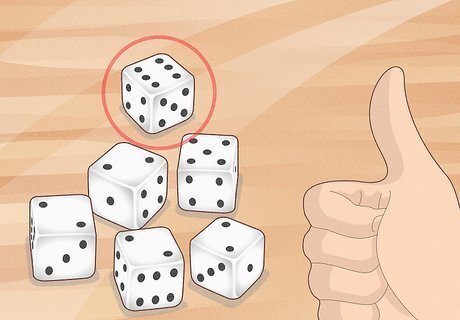
Stop rolling when you only have 1 or 2 unscored dice left. When you only have a couple of dice left, your odds of getting a 1 or 5 are pretty low. Rather than risking losing all the points you’ve banked for the turn, end your turn so you can add them to your score.
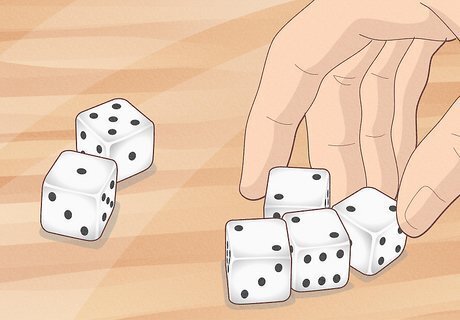
Keep rolling when you have 4, 5, or 6 dice left. If you only set aside 1 or 2 dice, you still have great odds of getting a three-of-a-kind and other scoring dice. Take a chance and try rolling the dice again to see how many more points you can bank. If you have a considerable lead on the other players, it’s okay to get a little riskier with your plays. Try rolling when you only have 3 dice left to press your luck.

Win the game by earning at least 10,000 points before the other players. As soon as you reach 10,000 or more points, all the other players get 1 more turn. If no one else is able to reach 10,000 points during their final turn, then you win. If someone else earns at least 10,000 points during their final turn, then the person with the most total points is the winner. Variation: For more of a challenge, play so you need exactly 10,000 points to win. If you go over 10,000 on your turn, then you get no points and it’s the next player’s turn.


















Comments
0 comment